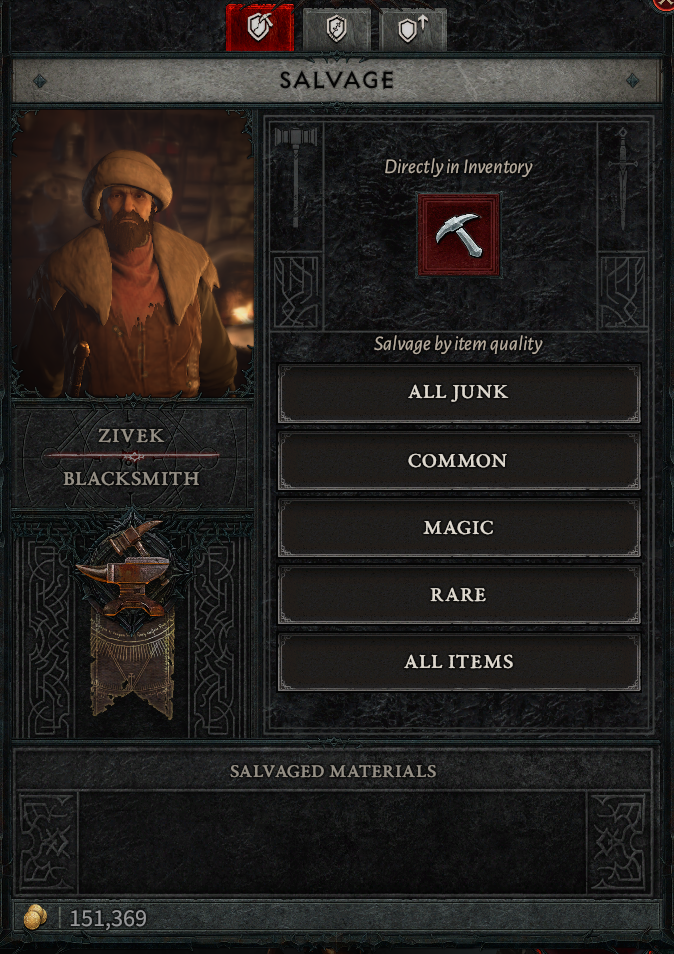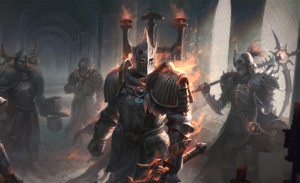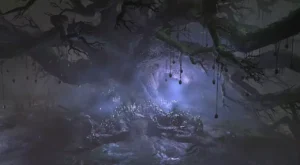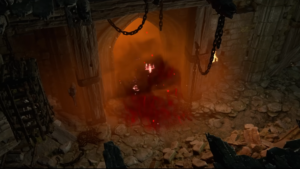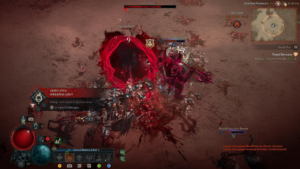Introduction
The Blacksmith is an important NPC that can be found in Kyovashad and other towns. The Blacksmith allows you to Salvage useless/lower tier items obtained from exploring the world or dungeons, Repair damaged or broken gear, and Upgrade items to give a stat boost to help with your playthrough.
TLDR/Summary
- A priority quest is given to the player at level 10 which prompts them to visit the Blacksmith.
- Salvaging equipment provides you with materials used to upgrade your equipment.
- Upon death items lose 10% of its durability, this can be repaired at the Blacksmith.
- Upgrading items increases both base stats and affix lines on an equipment.
Unlock
After reaching Character Level 10 you will be automatically given a Priority Quest to visit the Blacksmith Zivek in Kyovashad. To complete the priority quest you will have to upgrade one of your items, doing so will reward you with experience. After completing the quest Blacksmiths can be found in various locations such as towns, strongholds and outposts.
Salvage
During the course of your playthrough, your inventory will eventually fill up after exploring the world map and completing dungeons; the Blacksmith allows you to turn useless items into materials used to upgrade your gear. Materials obtained from salvaging vary depending on the rarity of the item, such as Iron Chunks, Silver Ore, Veiled Crystals, etc.
The table below lists materials that can be obtained from salvaging.
Note: It is possible to obtain materials from the previous rarity.
| Item Type | Materials |
|---|---|
| Common Weapon | Iron Chunk |
| Magic Weapon | Silver Ore |
| Rare Weapon | Veiled Crystals |
| Legendary Weapon | Baleful Fragment |
| Common Armor | Rawhide |
| Magic Armor | Superior Leather |
| Rare Armor | Veiled Crystals |
| Legendary Armor | Coiling Ward |
| Common Jewelry | Iron Chunk |
| Magic Jewelry | Silver Ore (Unsure) |
| Rare Jewelry | Veiled Crystals |
| Legendary Jewelry | Abstruse Sigils |
You may salvage items by their rarity/quality or selectively salvage items directly from your inventory. You can also select items to be categorized as “Junk”, doing so will allow you to select “All Junk” which salvages all items you have selected as junk (the same restrictions still apply as listed in notes).
Note: Items with a quality/rarity of Legendary and Unique will have to be manually salvaged, this also includes items that have been modified (socketed and enchanted).

Repair
During the course of your playthrough, your character will eventually die. When this happens, your equipment (Weapons and Armor) will lose 10% of its durability. If your durability reaches 0 your equipment will incur a penalty (Item Affixes are disabled) this makes your equipment significantly weaker, we recommend repairing your equipment before this happens. You may also choose to repair items directly from your inventory.
The gold cost to repair scales with Item Power and also increases for every 10% durability lost.

Upgrade Item
Eventually, as you progress through the game, you will hit a wall or have difficulty progressing through certain content such as Dungeons. When this happens we recommend visiting the Blacksmith to upgrade your equipment. Upgrading your equipment increases its base stats and affixes. This is important as alot of the affixes found on gear provide bonus damage multipliers such as vulnerable, overpower, damage to close or distant enemies, etc. The number of times an item can be upgraded depends on its quality/rarity.
The table below shows the materials required to upgrade.
| Item Level | Material Cost |
|---|---|
| 1 | Iron chunks |
| 2 | Iron chunks + Silver Ore |
| 3 | Iron Chunks + Silver ore + Veiled Crystals |
| 4 | Iron Chunks + Silver ore + Veiled Crystals + Baleful Fragment (Weapon)/Coiling Ward (Armor) |

